
The Rise and Fall of the Neoliberal Order: America and the World in the Free Market Era
by
Gary Gerstle
Published 14 Oct 2022
Notes Introduction 1.Steve Fraser and Gary Gerstle, eds., The Rise and Fall of the New Deal Order, 1930–1980 (Princeton, NJ: Princeton University Press, 1989). See also Gary Gerstle, Nelson Lichtenstein, and Alice O’Connor, “Introduction,” to Gary Gerstle, Nelson Lichtenstein, and Alice O’Connor, eds., Beyond the New Deal Order: U.S. Politics and Society from the Great Depression to the Great Recession (Philadelphia: University of Pennsylvania Press, 2019), 1–16; Gary Gerstle, “America’s Neoliberal Order,” in Gerstle, Lichtenstein, and O’Connor, eds., Beyond the New Deal Order, 257–278; Gary Gerstle, “The Rise and Fall (?)
…
The Rise and Fall of the Neoliberal Order Advance Praise for The Rise and Fall of the Neoliberal Order “Gary Gerstle offers a brilliant, engaging, and provocative first-draft history of the last half century, a period sorely in need of scrutiny. With characteristic big-think flair, he shows that the neoliberal wisdom of that era—that markets would bring democracy, that the age of big government was over—emerged from specific historical forces and circumstances. He also suggests that many of those ideas can and should now be consigned to the past.” —Beverly Gage, Yale University “Just beneath the surface of our fractured and polarized polity, Gary Gerstle argues that there has been a Neoliberal Order under which both parties worked in the 1990s and early 2000s.
…
—Julian Zelizer, Princeton University The Rise and Fall of the Neoliberal Order AMERICA AND THE WORLD IN THE FREE MARKET ERA Gary Gerstle Oxford University Press is a department of the University of Oxford. It furthers the University’s objective of excellence in research, scholarship, and education by publishing worldwide. Oxford is a registered trade mark of Oxford University Press in the UK and certain other countries. Published in the United States of America by Oxford University Press 198 Madison Avenue, New York, NY 10016, United States of America. © Gary Gerstle 2022 All rights reserved. No part of this publication may be reproduced, stored in a retrieval system, or transmitted, in any form or by any means, without the prior permission in writing of Oxford University Press, or as expressly permitted by law, by license, or under terms agreed with the appropriate reproduction rights organization.
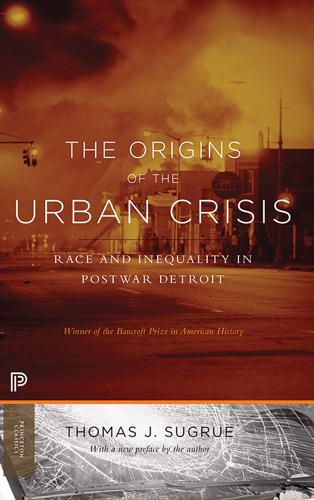
The Origins of the Urban Crisis
by
Sugrue, Thomas J.
A number of other friends have also read drafts of this book in their entirety and pushed me to rethink many of my assumptions. Special thanks to Eric Arnesen (who offered an extraordinary set of comments and filled my mailbox right up until the last minute with photocopied newspaper clippings), Dana Barron, Peter Coclanis, Lizabeth Cohen, Gerald Gamm (and his Urban Politics students), Gary Gerstle, Jim Grossman, Ira Katznelson, Robin Kelley, and Robert Lieberman. Other sections of the book have benefited from the astute comments of Jo Ann Argersinger, David Bartelt, Kevin Boyle, Alan Brinkley, Rick Halpern, Arnold Hirsch, Alison Isenberg, Michael Kazin, Phil Klinkner, Dan Letwin, Nelson Lichtenstein, John McGreevy, James Morone, Bruce Nelson, Alice O’Connor, James T.
…
Every major Northern and Midwestern city lost jobs in the 1950s. For a concise summary, see Kasarda, “Urban Change and Minority Opportunities,” 43–47, esp. Tables 1 and 2. On industrial decline, see Sugrue, “Structures of Urban Poverty,” 100–117; John Cumbler, A Social History of Economic Decline (New Brunswick, N.J.: Rutgers University Press, 1989); Gary Gerstle, Working-Class Americanism: A History of Labor in a Textile City, 1920–1960 (Cambridge: Cambridge University Press, 1989), 318–30; on the electrical industry, see Ronald W. Schatz, The Electrical Workers: A History of Labor at General Electric and Westinghouse (Urbana: University of Illinois Press, 1983), 232–37.
…
Margaret Weir, “The Federal Government and Unemployment: The Frustration of Policy Innovation from the New Deal to the Great Society,” in The Politics of Social Policy in the United States, ed. Margaret Weir, Ann Shola Orloff, and Theda Skocpol (Princeton, N.J.: Princeton University Press, 1988), 149–90; Ira Katznelson, “Was the Great Society a Lost Opportunity?” in The Rise and Fall of the New Deal Order, ed. Steve Fraser and Gary Gerstle (Princeton, N.J.: Princeton University Press, 1989), 185–211; Gary Mucciaroni, The Political Failure of Employment Policy, 1945–1982 (Pittsburgh: University of Pittsburgh Press, 1990), 17–53. 13. The literature on the post-World War II black migration is slim. See Nicholas Lemann, The Promised Land: The Great Black Migration and How It Changed America (New York: Random House, 1991); Jacqueline Jones, The Dispossessed: America’s Underclasses from the Civil War to the Present (New York: Basic Books, 1992), 205–65. 14.
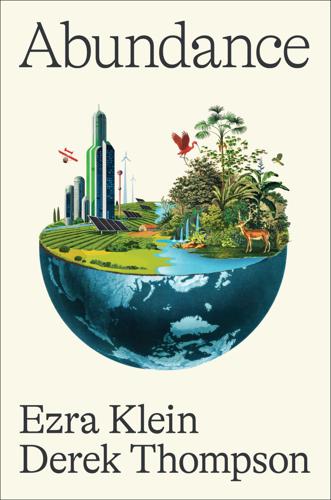
Abundance
by
Ezra Klein
and
Derek Thompson
Published 18 Mar 2025
The polarization of the 1990s feels quaint against the chasmic conflict of the 2020s. These divisions are real. They are dangerous. But behind them is the murky outline of something very different. Perhaps a path out of the morass we’re in. A new political order. The term “political order” is the coinage of Gary Gerstle, an American historian and a professor at Cambridge University. Many historians focus on how Republicans and Democrats have fought and disagreed over the years. Gerstle’s work focuses instead on how hidden points of consensus between the parties create distinctive periods of history, which he calls political orders.
…
Mark Whitaker, “The Dreams and Dedication Behind Our Leap to the Moon,” Washington Post, review of Charles Fishman, One Giant Leap (New York: Simon & Schuster, 2019), July 11, 2019, https://www.washingtonpost.com/outlook/the-dreams-and-dedication-behind-our-leap-to-the-moon/2019/07/11/6ae625f4-9456-11e9-b570-6416efdc0803_story.html. Conclusion: Toward Abundance 1. Gary Gerstle, The Rise and Fall of the Neoliberal Order: America and the World in the Free Market Era (New York: Oxford University Press, 2022), Kindle, 153–160. 2. Dwight D. Eisenhower, “Radio and Television Address to the American People on the Tax Program,” March 15, 1954, https://www.presidency.ucsb.edu/documents/radio-and-television-address-the-american-people-the-tax-program. 3.
…
Tax Foundation, “Historical US Federal Individual Income Tax Rates & Brackets, 1862–2021,” August 24, 2021, https://taxfoundation.org/data/all/federal/historical-income-tax-rates-brackets/; Adam Carasso and Gene Steuerle, “A Brief History of the Top Tax Rate,” Tax Policy Center, November 25, 2002, https://www.urban.org/sites/default/files/publication/59856/1000459-A-Brief-History-of-the-Top-Tax-Rate.PDF; Josephine Nesbit, “5 Presidents Who Raised Taxes the Most, and 5 Who Lowered Them: Is Trump One of Them?,” Yahoo! Finance, November 5, 2024, https://finance.yahoo.com/news/5-presidents-raised-taxes-most-140035413.html#:~:text=Harry%20Truman%2C%201945%2D1953&text=The%20Revenue%20Act%20of%201950,pay%20for%20the%20Korean%20War. 7. Gary Gerstle, interview with Derek Thompson. 8. Stefan Becket, “Read the Full VP Debate Transcript from the Walz-Vance Showdown,” October 2, 2024, https://www.cbsnews.com/news/full-vp-debate-transcript-walz-vance-2024/. 9. Donald Trump, The Economic Club of New York, September 5, 2024, transcript of speech, p. 27, https://www.econclubny.org/documents/10184/109144/20240905_Trump_Transcript.pdf. 10.
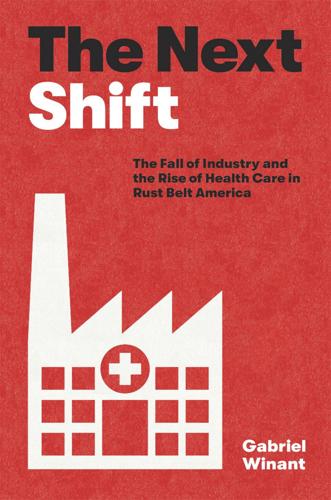
The Next Shift: The Fall of Industry and the Rise of Health Care in Rust Belt America
by
Gabriel Winant
Published 23 Mar 2021
Mike Davis, Prisoners of the American Dream: Politics and Economy in the History of the US Working Class (New York: Verso, 1986), 52–101; Nelson Lichtenstein, “From Corporatism to Collective Bargaining: Organized Labor and the Eclipse of Social Democracy in the Postwar Era,” in The Rise and Fall of the New Deal Order, 1930–1980, ed. Steve Fraser and Gary Gerstle (Princeton, NJ: Princeton University Press, 1989), 122–152; Steve Fraser, Labor Will Rule: Sidney Hillman and the Rise of American Labor (Ithaca, NY: Cornell University Press, 1993); John H. Hinshaw, Steel and Steelworkers: Race and Class Struggle in Twentieth-Century Pittsburgh (Albany: SUNY Press, 2002), 65–104; Nelson Lichtenstein, Labor’s War at Home: The CIO in World War II (Philadelphia: Temple University Press, 2003); Meg Jacobs, Pocketbook Politics: Economic Citizenship in Twentieth-Century America (Princeton, NJ: Princeton University Press, 2005), 179–220; Eric Leif Davin, Crucible of Freedom: Workers’ Democracy in the Industrial Heartland, 1914–1960 (Lanham, MD: Lexington Books, 2010); James T.
…
Jones, “The Unknown Origins of the March on Washington: Civil Rights Politics and the Black Working Class,” Labor 7, no. 3 (September 2010), 33–52; Judith Stein, Pivotal Decade: How the United States Traded Factories for Finance in the 1970s (New Haven, CT: Yale University Press, 2010); Cal Winslow, Aaron Brenner, and Robert Brenner, eds., Rebel Rank-and-File: Labor Militancy and Revolt from Below in the Long 1970s (New York: Verso, 2010); Julilly Kohler-Hausmann, Getting Tough: Welfare and Imprisonment in 1970s America (Princeton, NJ: Princeton University Press, 2017); Jessica Wilkerson, To Live Here, You Have to Fight: How Women Led Appalachian Movements for Social Justice (Urbana: University of Illinois Press, 2019); David Stein, “Containing Keynesianism in an Age of Civil Rights: Jim Crow Monetary Policy and the Struggle for Guaranteed Jobs, 1956–1979,” in Beyond the New Deal Order: U.S. Politics from the Great Depression to the Great Recession, ed. Gary Gerstle, Nelson Lichtenstein, and Alice O’Connor (Philadelphia: University of Pennsylvania Press, 2019), 124–140; Johanna Fernández, The Young Lords: A Radical History (Chapel Hill: University of North Carolina Press, 2019). 38. Duffy, Making Care Count. 39. Theodore R. Marmor, Jerry L. Mashaw, and Philip L.
…
Jones, “The Unknown Origins of the March on Washington: Civil Rights Politics and the Black Working Class,” Labor 7, no. 3 (September 2010), 33–52; David Stein, “Containing Keynesianism in an Age of Civil Rights: Jim Crow Monetary Policy and the Struggle for Guaranteed Jobs, 1956–1979,” in Beyond the New Deal Order: U.S. Politics from the Great Depression to the Great Recession, ed. Gary Gerstle, Nelson Lichtenstein, and Alice O’Connor (Philadelphia: University of Pennsylvania Press, 2019), 124–140. See “Remarks of Vice-President Humphrey United States Steel Corporation National Works McKeesport, Pennsylvania,” p. 3, October 29, 1968, box 39, Speech Text Files, Hubert H. Humphrey Papers, Minnesota Historical Society. 35.
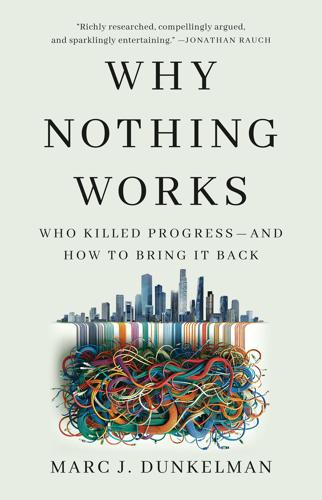
Why Nothing Works: Who Killed Progress--And How to Bring It Back
by
Marc J Dunkelman
Published 17 Feb 2025
Christopher Lasch, The Culture of Narcissism: American Life in an Age of Diminishing Expectations (New York: W. W. Norton, 1979), 265. 42. Rodgers, Mencken, 123. 43. Reuel Schiller, “Regulation and the Collapse of the New Deal Order, or How I Learned to Stop Worrying and Love the Market,” in Beyond the New Deal Order, ed. Gary Gerstle, Nelson Lichtenstein, and Alice O’Connor (Philadelphia: University of Pennsylvania Press, 2019), 170. 44. Alfred D. Chandler Jr., The Visible Hand (Cambridge, MA: Belknap, 1977), 275–277. Scott, Seeing Like a State, 336–337. 45. Ira Katznelson, Desolation and Enlightenment: Political Knowledge After Total War, Totalitarianism, and the Holocaust (New York: Columbia University Press, 2003), 137. 46.
…
Sabin, Public Citizens, 24, 41, 63. 65. Louis L. Jaffe, Judiciary Control of Administrative Action (Boston: Little, Brown, 1965), 344. As quoted in Reuel Schiller, “Regulation and the Collapse of the New Deal Order, or How I Learned to Stop Worrying and Love the Market,” in Beyond the New Deal Order, ed. Gary Gerstle, Nelson Lichtenstein, and Alice O’Connor (Philadelphia: University of Pennsylvania Press, 2019), 168–185. 66. George Packer, Last Best Hope: America in Crisis and Renewal (New York: Picador, 2021), 66–70. 67. In a commencement address at Yale in 1962, President Kennedy had argued explicitly for more and bigger government to “research for sophisticated solutions to complex and obstinate issues” that were “more subtle and less simple.”
…
McGarity, “Some Thoughts on ‘Deossifying’ the Rulemaking Process,” 1426. 76. Francis X. Clines and Bernard Weinraub, “Washington Talk: Briefing,” New York Times, September 28, 1981. 77. Reuel Schiller, “Regulation and the Collapse of the New Deal Order, or How I Learned to Stop Worrying and Love the Market,” in Beyond the New Deal Order, ed. Gary Gerstle, Nelson Lichtenstein, and Alice O’Connor (Philadelphia: University of Pennsylvania Press, 2019). 78. Philip K. Howard and Geoff Kabaservice, “Can America Untangle Itself from Red Tape? (With Philip K. Howard),” September 1, 2021, in Vital Center, podcast, www.niskanen center.org/can-america-untangle-itself-from-red-tape-with-phillip-k-howard/. 79.

To Serve God and Wal-Mart: The Making of Christian Free Enterprise
by
Bethany Moreton
Published 15 May 2009
Carter, The Politics of Rage: George Wallace, the Origins of the New Conservatism, and the Transformation of American Politics (New York: Simon & Schuster, 1995); James C. Cobb, The Selling of the South: The Southern Crusade for Industrial Development, 1936–1980 (Baton Rouge, LA: Louisiana State University Press, 1982); Steve Fraser and Gary Gerstle, eds., The Rise and Fall of the New Deal Order, 1930–1980 (Princeton: Princeton University Press, 1989); Thomas Byrne Edsall with Mary D. Edsall, Chain Reaction: 278 NOTES TO PAGES 2 – 4 5. 6. 7. 8. 9. 10. 11. The€Impact of Race, Rights, and Taxes on American Politics (New York: Norton, 1991); Bruce J.
…
Phillips, The Emerging Republican Majority (New Rochelle, NY: Arlington House, 1969). On the failure of Phillips’s “Southern strategy” and its replacement with “suburban populism,” see Lassiter, The Silent Majority, 251–75. Thomas Byrne Edsall, “The Changing Shape of Power: A Realignment in Public Policy,” in The Rise and Fall of the New Deal Order, ed. Steve Fraser and Gary Gerstle (Princeton: Princeton University Press, 1989), 269–93; Mike Davis, Prisoners of the American Dream: Politics and Economy in the History of the U.S. Working Class (New York: Verso, 1999), 171–76. The term Â�comes from the path-breaking work of Lisa McGirr, Suburban Warriors: The Origins of the New Christian Right (Princeton: Princeton University Press, 2001); see also Donald T.
…
Nelson Lichtenstein, “From Corporatism to Collective Bargaining: Organized Labor and the Eclipse of Social Democracy in the Postwar Era,” in The Rise and 289 NOTES TO PAGES 41 – 4 5 19. 20. 21. 22. 23. 24. 25. 26. 27. 28. 29. 30. 31. 32. 33. 34. 35. 36. 37. 38. 39. 40. 41. 42. Fall of the New Deal Order, 1930–1980, ed. Steve Fraser, Gary Gerstle (Princeton: Princeton University Press, 1989), 120. “Peace on Earth,” WMW, December 1972, 8. “Glowing Letters and Thank-You Notes,” WMW, May [copy II] 1975, 4. Stephen Koepp, with B. Russell Leavitt, “Make That Sale, Mr. Sam,” Time, May 18, 1987, 54. “Store Happenings,” WMW, October 1975, 14. “#717’s ‘Board of Directors,’” WMW, May 1990, 15.
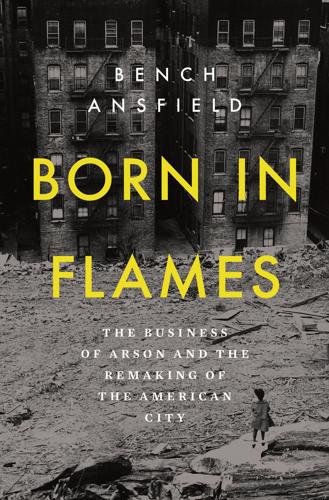
Born in Flames
by
Bench Ansfield
Published 15 Aug 2025
In addition to Taylor’s work, see the contributions in Destin Jenkins and Justin Leroy, eds., Histories of Racial Capitalism (New York: Columbia University Press, 2021). See also David Stein, “Containing Keynesianism in an Age of Civil Rights: Jim Crow Monetary Policy and the Struggle for Guaranteed Jobs, 1956–1979,” in Beyond the New Deal Order: U.S. Politics from the Great Depression to the Great Recession, ed. Gary Gerstle et al. (Philadelphia: University of Pennsylvania Press, 2019), 124–40; Ho, Liquidated; Louis Hyman, Debtor Nation: The History of America in Red Ink (Princeton, NJ: Princeton University Press, 2011), chapter 6; and Phillips-Fein, Fear City. For elaborations on racial capitalism, see Cedric Robinson, Black Marxism: The Making of the Black Radical Tradition (Chapel Hill: University of North Carolina Press, 2000); Stuart Hall, “Race, Articulation, and Societies Structured in Dominance,” in Stuart Hall Essential Essays, vol. 1, ed.
…
Shapiro, Fire Insurance and the Inner City (New York City Rand Institute, 1971), 18–20. 19Judith Stein, Pivotal Decade: How the United States Traded Factories for Finance in the Seventies (New Haven, CT: Yale University Press, 2010); Benjamin Holtzman, The Long Crisis: New York City and the Path to Neoliberalism (New York: Oxford University Press, 2021); Julilly Kohler-Hausmann, Getting Tough: Welfare and Imprisonment in 1970s America (Princeton, NJ: Princeton University Press, 2017); Gary Gerstle, The Rise and Fall of the Neoliberal Order: America and the World in the Free Market Era (New York: Oxford University Press, 2022); Annelise Orleck, Storming Caesar’s Palace: How Black Mothers Fought Their Own War on Poverty (Boston: Beacon Press, 2005); Bethany Moreton, To Serve God and Wal-Mart: The Making of Christian Free Enterprise (Cambridge, MA: Harvard University Press, 2010); Alice O’Connor, Poverty Knowledge: Social Science, Social Policy, and the Poor in Twentieth-Century U.S.
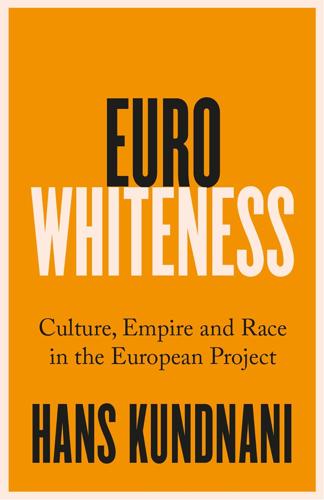
Eurowhiteness: Culture, Empire and Race in the European Project
by
Hans Kundnani
Published 16 Aug 2023
The “West” refers here to the western part of what we now call the West and “East” to the eastern part of the West, in other words, central Europe. 20.Calhoun, introduction to Kohn, p. xxvi. 21.Eric Foner, The Second Founding. How the Civil War and Reconstruction Remade the Constitution (New York: Norton, 2019), p. 71. On civic and racial versions of American nationalism, see also Gary Gerstle, American Crucible. Race and Nation in the Twentieth Century (Princeton: Princeton University Press, 2017). 22.Calhoun, introduction to Kohn, p. xl. I use the term “ethnic/cultural” instead of the narrower “ethnic” used by Kohn. This can also include identity based on religion—the distinction between ethnicity and religion is a blurry one.
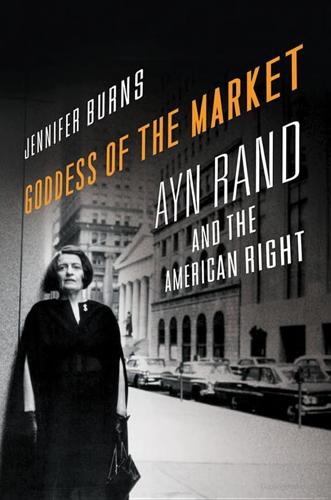
Goddess of the Market: Ayn Rand and the American Right
by
Jennifer Burns
Published 18 Oct 2009
Barbara Branden, “Intellectual Ammunition Department,” The Objectivist Newsletter 2, no. 6 (1963), 23. For labor’s gains during the war as causative of business activism, see Nelson Lichtenstein, “The Eclipse of Social Democracy,” in The Rise and Fall of the New Deal Order, ed. Steve Fraser and Gary Gerstle (Princeton, NJ: Princeton University Press, 1989), 122–52. 7. Anthem was published as the entire contents of Pamphleteers 3, no. 1 (1946). “Our Competitive Free Enterprise System,” Chamber of Commerce of the United States, Washington, D.C., 1946; Hart to AR, January 6, 1947, and Walker to AR, January 2, 1947, ARP 003–11x. 8.
…
Bushwomen: Tales of a Cynical Species. New York: Verso, 2004. Fones-Wolf, Elizabeth A. Selling Free Enterprise: The Business Assault on Labor and Liberalism, 1945–60. Urbana: University of Illinois Press, 1994. Fox, Richard Wightman. Reinhold Niebuhr: A Biography. New York: Pantheon Books, 1985. Fraser, Steve, and Gary Gerstle. The Rise and Fall of the New Deal Order, 1930–1980. Princeton, NJ: Princeton University Press, 1989. Freeman, Joanne B. “The Culture of Politics: The Politics of Culture.” Journal of Policy History 16, no. 2 (2004): 137. Friedman, Milton, with Rose Friedman, Capitalism and Freedom. Chicago: University of Chicago Press, 1962. ______, and Rose D.

The Cigarette: A Political History
by
Sarah Milov
Published 1 Oct 2019
However, among modern American political historians, the New Deal’s long-lasting agricultural legacy has largely been overshadowed by the New Deal’s legacy on labor, business, and the welfare state. The seminal volume The Rise and Fall of the New Deal Order, for example, does not devote a single essay to agricultural regulation. See The Rise and Fall of the New Deal Order, 1930–1980, Steve Fraser and Gary Gerstle, eds. (Princeton: Princeton University Press, 1989). Indeed, farm regulations barely make an appearance in synthetic assessments of the New Deal’s legacy on business or political realignment. 13. Beginning in 1933, the government began directly shaping the price and supply of most types of tobacco grown in the United States.
…
Sparrow, Warfare State: World War II Americans and the Age of Big Government (Oxford: Oxford University Press, 2011), 247. 10. On the paradigm of scarcity in the early New Deal, see Robert Collins, More: The Politics of Growth in Postwar America (Oxford: Oxford University Press, 2000), 6–8; Alan Brinkley, “The New Deal and the Idea of the State,” in The Rise and Fall of the New Deal Order, 1930–1980, Steve Fraser and Gary Gerstle, eds. (Princeton: Princeton University Press, 1989), 105–108. On the doctrine of growth in the immediate postwar period, see Collins, More, 17–39. 11. These goals were articulated in the Employment Act of 1946: “The Congress hereby declares that it is the continuing policy and responsibility of the federal government to use all practicable means consistent with its needs and obligations … to promote maximum employment, production, and purchasing power.”
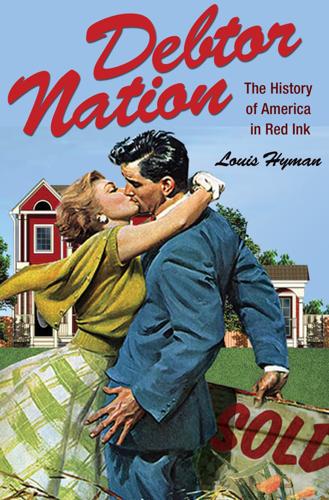
Debtor Nation: The History of America in Red Ink (Politics and Society in Modern America)
by
Louis Hyman
Published 3 Jan 2011
DEBTOR NATION POLITICS AND SOCIETY IN TWENTIETH-CENTURY AMERICA SERIES EDITORS William Chafe, Gary Gerstle, Linda Gordon, and Julian Zelizer A list of titles in this series appears at the back of the book DEBTOR NATION THE HISTORY OF AMERICA IN RED INK Louis Hyman PRINCETON UNIVERSITY PRESS PRINCETON AND OXFORD Copyright © 2011 by Princeton University Press Published by Princeton University Press, 41 William Street, Princeton, New Jersey 08540 In the United Kingdom: Princeton University Press, 6 Oxford Street, Woodstock, Oxfordshire OX20 1TW press.princeton.edu Jacket illustration by Tom Lovell, 1956.
…
At Princeton University Press, I found the most wonderful place for a young scholar to publish his first work. The close attention of two anonymous reviewers contributed in substantial ways to the revision of the manuscript from the dissertation, making the arguments clearer and the chapters more concise. Gary Gerstle’s singular focus on the big picture helped me cut the fat and speak to the biggest questions. Dale Cotton painstakingly copyedited the final draft with an eye for detail that I truly envy. Most of all, I would like to thank my editor, Clara Platter, who shepherded the manuscript from dissertation to book, answering the seemingly endless questions of a beginning author with endless patience and wisdom.

Power and Progress: Our Thousand-Year Struggle Over Technology and Prosperity
by
Daron Acemoglu
and
Simon Johnson
Published 15 May 2023
Computer Networks and ISDN Systems 30:107‒117. Brinkley, Alan. 1983. Voices of Protests: Huey Long, Father Coughlin, and the Great Depression. New York: Vintage. Brinkley, Alan. 1989. “The New Deal and the Idea of the State.” In The Rise and Fall of the New Deal Order, 1930‒1980, edited by Steve Fraser and Gary Gerstle, 85‒121. Princeton, NJ: Princeton University Press. Broodbank, Cyprian. 2013. The Making of the Middle Sea: A History of the Mediterranean from the Beginning to the Emergence of the Classical World. Oxford: Oxford University Press. Brothwell, Don, and Patricia Brothwell. 1969. Food in Antiquity: A Survey of the Diet of Early Peoples.
…
Ford, Martin. 2021. Rule of the Robots: How Artificial Intelligence Will Transform Everything. New York: Basic Books. Fox, H. S. A. 1986. “The Alleged Transformation from Two-Field to Three-Field Systems in Medieval England.” Economic History Review 39, no. 4 (November): 526‒548. Fraser, Steve, and Gary Gerstle. 1989. The Rise and Fall of the New Deal Order, 1930‒1980. Princeton, NJ: Princeton University Press. Freeman, Joshua B. 2018. Behemoth: A History of the Factory and the Making of the Modern World. New York: W.W. Norton. Frenkel, Sheera, and Cecelia Kang. 2021. An Ugly Truth: Inside Facebook’s Battle for Domination.

Shocks, Crises, and False Alarms: How to Assess True Macroeconomic Risk
by
Philipp Carlsson-Szlezak
and
Paul Swartz
Published 8 Jul 2024
In contrast to Fukuyama’s argument for the end of history, Samuel Huntington expected future conflicts to continue, but arising from tribal hatreds and cultural differences. Samuel P. Huntington, The Clash of Civilizations and the Remaking of World Order (New York: Simon & Schuster, 1996). 6. Gary Gerstle, The Rise and Fall of the Neoliberal Order: America and the World in the Free Market Era (New York: Oxford University Press, 2002). 7. The Washington Consensus is an informal set of policy recommendations aimed at promoting economic development in less developed countries. Recommendations include such things as fiscal discipline, trade liberalization, privatization, and liberalization of foreign direct investment inflows.

Chokepoints: American Power in the Age of Economic Warfare
by
Edward Fishman
Published 25 Feb 2025
GO TO NOTE REFERENCE IN TEXT “a vicious cycle”: “Excerpts from the Opening Address by Secretary Kissinger at the International Oil Meeting in Washington,” The New York Times, February 12, 1974, www.nytimes.com/1974/02/12/archives/excerpts-from-the-opening-address-by-secretary-kissinger-at-the.html. GO TO NOTE REFERENCE IN TEXT “right of Genghis Khan”: Quoted in Eric Helleiner, States and the Reemergence of Global Finance: From Bretton Woods to the 1990s (Ithaca: Cornell University Press, 1994), 115. GO TO NOTE REFERENCE IN TEXT career as a bond trader: Gary Gerstle, The Rise and Fall of the Neoliberal Order (New York: Oxford University Press, 2022), 111–12. GO TO NOTE REFERENCE IN TEXT factories over motorists: Richard W. Stevenson, “William E. Simon, Ex-Treasury Secretary and High-Profile Investor, Is Dead at 72,” The New York Times, June 5, 2000, www.nytimes.com/2000/06/05/us/william-e-simon-ex-treasury-secretary-and-high-profile-investor-is-dead-at-72.html.
…
GO TO NOTE REFERENCE IN TEXT fresh deal with Riyadh: Spiro, Hidden Hand, 105, 121–24. GO TO NOTE REFERENCE IN TEXT Chapter 5: Our Currency, Your Problem power of the free market: William E. Simon, A Time for Truth: (McGraw-Hill: Reader’s Digest Press, 1978). See David Harvey, A Brief History of Neoliberalism (New York: Oxford University Press, 2005) and Gary Gerstle, The Rise and Fall of the Neoliberal Order (New York: Oxford University Press, 2022) for accounts of neoliberalism and its impact on America and the world. GO TO NOTE REFERENCE IN TEXT destroy official files: Eric Helleiner, States and the Reemergence of Global Finance: From Bretton Woods to the 1990s (Ithaca: Cornell University Press, 1994), 150.

Can Democracy Work?: A Short History of a Radical Idea, From Ancient Athens to Our World
by
James Miller
Published 17 Sep 2018
Washington suspected radical democrats: Thomas P. Slaughter, The Whiskey Rebellion (New York: Oxford University Press, 1986), 165. “The American people came to believe”: Walter Lippmann, Public Opinion (New York: Harcourt, 1922), 179. This political culture was nourished: An important point made by Gary Gerstle, Liberty and Coercion: The Paradox of American Government from the Founding to the Present (Princeton: Princeton University Press, 2015). “every thing to which a man may attach a value”: James Madison, “Private Property,” National Gazette, March 29, 1792, in The Papers of James Madison, vol. 14, ed.

The Age of Surveillance Capitalism
by
Shoshana Zuboff
Published 15 Jan 2019
The result was to be “an ever improving race winnowed by competition.” Any violation of these “natural laws” would only benefit “the survival of the unfittest” and reverse the evolution of the race. 30. David Nasaw, “Gilded Age Gospels,” in Ruling America: A History of Wealth and Power in a Democracy, ed. Steve Fraser and Gary Gerstle (Cambridge, MA: Harvard University Press, 2005), 124–25. 31. Nasaw, “Gilded Age,” 132. 32. Nasaw, 146. 33. Lawrence M. Friedman, American Law in the 20th Century (New Haven, CT: Yale University Press, 2004), 15–28. 34. Nasaw, “Gilded Age,” 148. 35. For two outstanding discussions, see Chris Jay Hoofnagle, Federal Trade Commission: Privacy Law and Policy (New York: Cambridge University Press, 2016); Julie E.
…
Cohen, “The Regulatory State in the Information Age,” Theoretical Inquiries in Law 17, no. 2 (2016), http://www7.tau.ac.il/ojs/index.php/til/article/view/1425. 36. Jodi L. Short, “The Paranoid Style in Regulatory Reform,” Hastings Law Journal 63 (January 12, 2011): 633. 37. For a wonderful collection of essays on this subject, see Steve Fraser and Gary Gerstle, eds., The Rise and Fall of the New Deal Order 1930–1980 (Princeton, NJ: Princeton University Press, 1989). 38. Alan Brinkley, Liberalism and Its Discontents (Cambridge, MA: Harvard University Press, 2000). 39. Short, “The Paranoid Style,” 44–46. 40. Short, 52–53. Economic historian Philip Mirowski summarizes the “metatheses” that since the 1980s helped to constitute neoliberalism as a loose “paradigm,” despite its amorphous, multifaceted, and sometimes contradictory theories and practices.
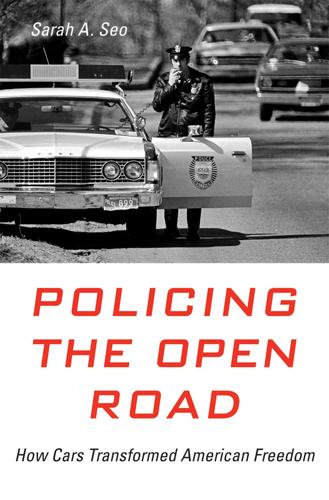
Policing the Open Road
by
Sarah A. Seo
Igo, The Known Citizen: A History of Privacy in Modern America (Cambridge, MA: Harvard University Press, 2018), 108–112. On heteronormativity and homosexuality at midcentury, see Elaine Tyler May, “Cold War—Warm Hearth: Politics and the Family in Postwar America,” in The Rise and Fall of the New Deal Order 1930–1980, ed. Steve Fraser and Gary Gerstle (Princeton, NJ: Princeton University Press, 1989), 153–181; Lynn Spigel, Make Room for TV: Television and the Family Ideal in Postwar America (Chicago: University of Chicago Press, 1992); Margot Canaday, The Straight State: Sexuality and Citizenship in Twentieth-Century America (Princeton, NJ: Princeton University Press, 2009).
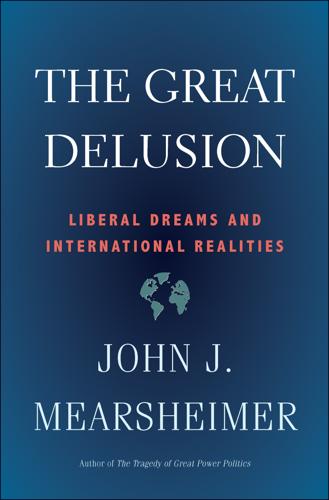
The Great Delusion: Liberal Dreams and International Realities
by
John J. Mearsheimer
Published 24 Sep 2018
Rawls’s reluctance to embrace the state is on display in The Law of Peoples, where he purposefully avoids focusing on states, which are usually considered the principal actors in international politics, and instead talks mainly about peoples, which are usually given short shrift by international relations scholars. 57. See Gary Gerstle, Liberty and Coercion: The Paradox of American Government from the Founding to the Present (Princeton, NJ: Princeton University Press, 2015), which describes the growing power of the American interventionist state over time and how modus vivendi liberalism affects it in limited ways. 58. Michael McGerr, A Fierce Discontent: The Rise and Fall of the Progressive Movement in America, 1870–1920 (New York: Oxford University Press, 2003); Charles Postel, The Populist Vision (New York: Oxford University Press, 2007); Stephen Skowronek, Stephen M.

Open Standards and the Digital Age: History, Ideology, and Networks (Cambridge Studies in the Emergence of Global Enterprise)
by
Andrew L. Russell
Published 27 Apr 2014
Greenfield, “History of FORTRAN Standardization,” Proceedings of the 1982 National Computer Conference (Arlington, Virginia: AFIPS Press, 1982), 819–824. 2 John Brooks, Telephone: The First Hundred Years (New York: Harper & Row, 1976), 206; Fred W. Henck and Bernard Strassburg, A Slippery Slope: The Long Road to the Breakup of AT&T (New York: Greenwood Press, 1988), 1–7; Alan Brinkley, “The New Deal and the Idea of the State,” in Steve Fraser and Gary Gerstle, The Rise and Fall of the New Deal Order, 1930–1980 (Princeton, NJ: Princeton University Press, 1990); Ellis W. Hawley, The New Deal and the Problem of Monopoly: A Study in Economic Ambivalence (Princeton, NJ: Princeton University Press, 1966). 3 Robert W. McChesney, Telecommunications, Mass Media, and Democracy: The Battle for the Control of U.S.

America Right or Wrong: An Anatomy of American Nationalism
by
Anatol Lieven
Published 3 May 2010
Mead, Special Providence, p. 241; see also Phillips, The Emerging Republican Majority, especially pp. 290-392 (on the Midwest). Nathan Glazer and Daniel P. Moynihan, Beyond the Melting Pot: The Negroes, Puerto Ricans, Jews, Italians and Irish of New York City (Cambridge, MA: MIT Press, 1979), p. 222. See Gary Gerstle, American Crucible: Race and Nation in the Twentieth Century (Princeton, NJ: Princeton University Press, 2001); and Alan Wolfe, "Strangled by Roots," The New Republic, May 28, 2001. For the role of the experience and portrayal of the Frontier in American culture, see the three-part work by Richard Slotkin, Regeneration Through Violence: The Mythology of the American Frontier, 1600-1800; The Fatal Environment: The Myth of the Frontier in the Age of Industrialisation; and Gunfighter Nation: The Myth of the Frontier in Twentieth Century America (Norman: Oklahoma University Press, 1973,1985, and 1998 respectively).

Behemoth: A History of the Factory and the Making of the Modern World
by
Joshua B. Freeman
Published 27 Feb 2018
Freeman, American Empire, 1945–2000: The Rise of a Global Empire, the Democratic Revolution at Home (New York: Viking, 2012), 21; Peterson, Planning the Home Front, 279. 8.For the impact of World War II on the American working class, see Joshua Freeman, “Delivering the Goods: Industrial Unionism during World War II,” Labor History 19 (4) (Fall 1978); Nelson Lichtenstein, “The Making of the Postwar Working Class: Cultural Pluralism and Social Structure in World War II,” The Historian 51 (1) (Nov. 1988), 42–63; Gary Gerstle, “The Working Class Goes to War,” Mid-America 75 (3) (1993), 303–22. Dorothea Lange and Charles Wollenberg, Photographing the Second Gold Rush: Dorothea Lange and the East Bay at War, 1941–1945 (Berkeley, CA: Heyday Books, 1995). 9.Jack Metzgar, “The 1945–1946 Strike Wave,” in Aaron Brenner, Benjamin Day, and Immanuel Ness, eds., The Encyclopedia of Strikes in American History (Armonk, NY: M.E.
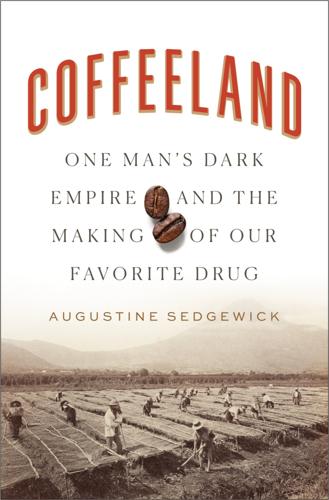
Coffeeland: One Man's Dark Empire and the Making of Our Favorite Drug
by
Augustine Sedgewick
Published 6 Apr 2020
Daniel Rogers and Samuel M. Wilson, 181–200. New York: Plenum, 1993. Fox, William. An Address, to the People of Great Britain, on the Utility of Refraining from the Use of West India Sugar and Rum. London, 1791. https://archive.org/details/addresstopeopleo1791foxw/page/n2. Fraser, Steve, and Gary Gerstle, eds. The Rise and Fall of the New Deal Order, 1930–1980. Princeton, NJ: Princeton University Press, 1989. Fregulia, Jeanette M. A Rich and Tantalizing Brew: A History of How Coffee Connected the World. Little Rock: University of Arkansas Press, 2019. Fridell, Gavin. Fair Trade Coffee: The Prospects and Pitfalls of Market-Driven Social Justice.

There Is No Place for Us: Working and Homeless in America
by
Brian Goldstone
Published 25 Mar 2025
Quoted in Jon Erickson and Charles Wilhem, Housing the Homeless (New Brunswick, N.J.: Rutgers University Press, 1986), 315. GO TO NOTE REFERENCE IN TEXT the neoliberal revolution: George Monbiot and Peter Hutchison, Invisible Doctrine: The Secret History of Neoliberalism (New York: Crown, 2024); Gary Gerstle, The Rise and Fall of the Neoliberal Order: America and the World in the Free Market Era (New York: Oxford University Press, 2022). GO TO NOTE REFERENCE IN TEXT the shock needed to be neutralized: Much of this section is indebted to Peter Marcuse’s incisive work, in particular his essay “Neutralizing Homelessness,” Socialist Review, no. 1 (1988): 69–97.
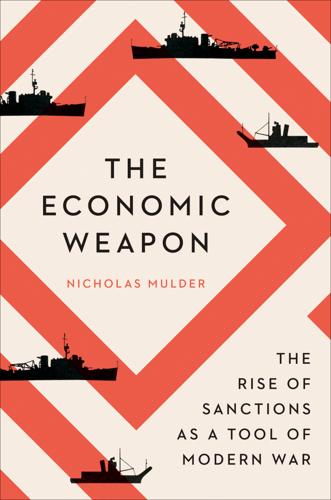
The Economic Weapon
by
Nicholas Mulder
Published 15 Mar 2021
On this break within British New Liberalism, especially the dissociation of free trade from laissez-faire, see Anthony Howe, Free Trade and Liberal England, 1846–1946 (Oxford: Clarendon Press, 1997), pp. 274–308; on French social liberalism, see Serge Audier, La pensée solidariste: Aux sources du modèle sociale républicain (Paris: Presses Universitaires de Paris, 2010); on the emergence in the 1920s United States of a “new liberalism that emphasized the ‘economic’ and neglected the ‘cultural,’” see Gary Gerstle, “The Protean Character of American Liberalism,” American Historical Review 99, no. 4 (October 1994): 1043–1073. 10. On neoliberals’ separation between property (dominium) and sovereignty (imperium), see Quinn Slobodian, Globalists: The End of Empire and the Birth of Neoliberalism (Cambridge, MA: Harvard University Press, 2018), pp. 121–181. 11.
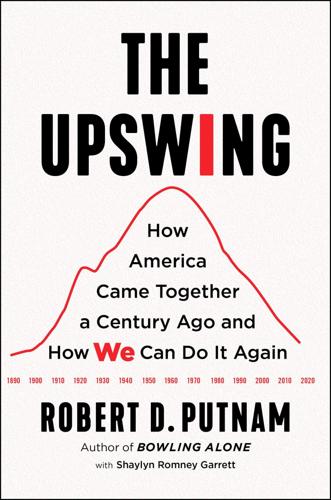
The Upswing: How America Came Together a Century Ago and How We Can Do It Again
by
Robert D. Putnam
Published 12 Oct 2020
Putnam, “E Pluribus Unum: Diversity and Community in the Twenty-first Century: The 2006 Johan Skytte Prize Lecture,” Scandinavian Political Studies 30, no. 2 (2007): 137–74, doi:10.1111/j.1467-9477.2007.00176.x. 30 The best studies of the incorporation of immigrants historically into the United States include E Pluribus Unum?: Contemporary and Historical Perspectives on Immigrant Political Incorporation, eds. Gary Gerstle and John H. Mollenkopf (New York: Russell Sage Foundation, 2001); Richard D. Alba and Victor Nee, Remaking the American Mainstream: Assimilation and Contemporary Immigration (Cambridge: Harvard University Press, 2003); and Richard D. Alba, Blurring the Color Line: The New Chance for a More Integrated America, The Nathan I.
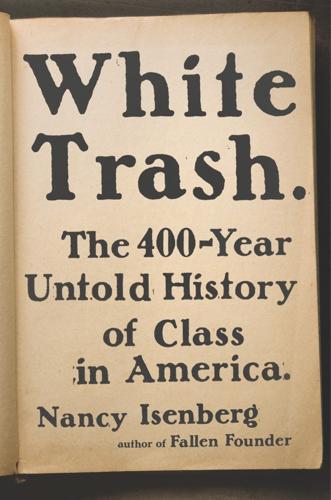
White Trash: The 400-Year Untold History of Class in America
by
Nancy Isenberg
Published 20 Jun 2016
For a detailed account of his trip, see Candice Millard, River of Doubt: Theodore Roosevelt’s Darkest Journey (New York: Doubleday, 2005). And for the best discussion of Roosevelt’s rugged masculinity, see Gail Bederman, Manliness and Civilization: A Cultural History of Gender and Race in the United States, 1880–1917 (Chicago: University of Chicago Press, 1995), 170–215. 46. On the composition of the Rough Riders, see Gary Gerstle, “Theodore Roosevelt and the Divided Character of American Nationalism,” Journal of American History 86, no. 3 (December 1999): 1280–1307, esp. 1282–83, 1286–87. 47. Frederic Remington, “Cracker Cowboys of Florida,” Harper’s New Monthly Magazine 91, no. 543 (August 1895): 339–46, esp. 339, 341–42, 344; for a similar portrait, see “Florida Crackers and Cowboys,” [San Francisco] Daily Evening Bulletin, May 5, 1883. 48.
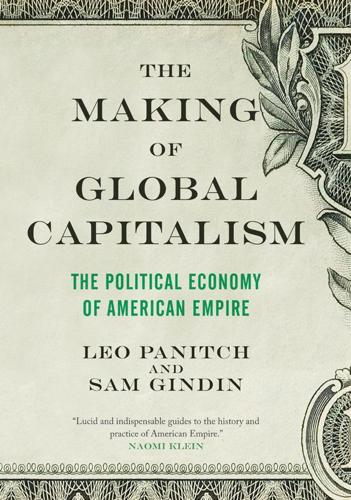
The Making of Global Capitalism
by
Leo Panitch
and
Sam Gindin
Published 8 Oct 2012
Bright, “The State in the United States During the Nineteenth Century,” in Charles Bright and Susan Friend Harding, eds., Statemaking and Social Movements: Essays in History and Theory, Ann Arbor: University of Michigan Press, 1984, p. 124. See also Victor G. Kiernan, America: The New Imperialism: From White Settlement to World Hegemony, London: Verso, 2005, p. 7. 29 For the importance of state governments’ expansive capacity to use their constitutional “police powers” to regulate myriad dimensions of social life, see Gary Gerstle, “The Resilient Power of the States across the Long Nineteenth Century: An Inquiry into a Pattern of American Governance,” in Lawrence Jacobs and Desmond King, eds., The Unsustainable American State, Oxford: OUP, 2009. 30 Despite manifest racial and gender exclusions, even poor farmers had the right to vote from the beginning, and by the 1830s so did all white men regardless of whether or not they owned property (with 80 percent of them actually voting in national elections over the rest of the century). 31 Bright, “The State in the United States,” pp. 121–2; see also Kimberley S.
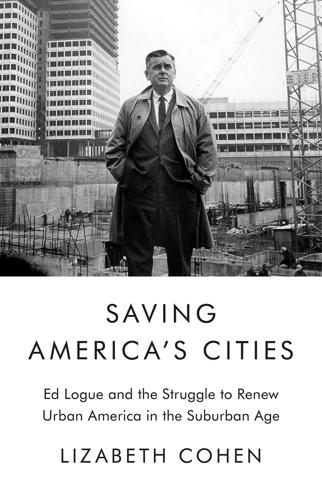
Saving America's Cities: Ed Logue and the Struggle to Renew Urban America in the Suburban Age
by
Lizabeth Cohen
Published 30 Sep 2019
I am grateful to Alan Altshuler, Hillary Ballon, Frank Barrett, David Barron, Paul Bass, Jonathan Bell, Nicholas Bloom, Peter Bray, Robert Caro, Michael Carriere, Sue Cobble, Nancy Cott, John Davis, Jameson Doig, Claire Dunning, Robert Ellikson, Louise Endel, Susan Fainstein, Justin Florence, Eric Foner, Gerald Frug, John Gaddis, Gary Gerstle, Jess Gilbert, Glenda Gilmore, Edward Glaeser, Brian Goldstein, Linda Gordon, Robert Gordon, Chris Grimley, Michael Gruenbaum, Dirk Hartog, Dolores Hayden, Diana Hernandez, Jennifer Hock, Andy Horowitz, Ada Louise Huxtable, Ken Jackson, Jerold Kayden, Alice Kessler-Harris, Jim Kloppenberg, Alex Krieger, Michael Kubo, Clifford Kuhn, Matthew Lasner, Stephen Lassonde, Deborah Leff, Neil Levine, David Luberoff, Elisa Minoff, John Mollenkopf, Mitchell Moss, Dan Okrent, Mark Pasnik, Alina Payne, Alan Plattus, Douglas Rae, Tim Rohan, Mark Rose, Lynne Sagalyn, Nick Salvatore, Hashim Sarkis, Chris Schmidt, Jane Shaw, Gaddis Smith, Jonathan Soffer, Tim Stanley, Robert Stern, Tom Sugrue, Mary Summers, Adam Tanaka, Lawrence Vale, Jim Vrabel, David Wylie, and Elizabeth Ylvisaker.

Wasps: The Splendors and Miseries of an American Aristocracy
by
Michael Knox Beran
Published 2 Aug 2021
Wherever there is a popular and limited government this difficulty will be found in its path, and unless some satisfactory solution of the problem can be reached, popular institutions may yet find their very existence endangered.” “public wealth”: “Without fully realizing it, he [Roosevelt] was embracing the essence of what would soon be known as Keynesian economics.” Alan Brinkley, “The New Deal and the Idea of the State,” in The Rise and Fall of the New Deal Order 1930–1980, ed. Steve Fraser and Gary Gerstle (Princeton, N.J.: Princeton University Press, 1989), 97. retreat: On the New Deal’s “retreat from reform,” see Alan Brinkley, The End of Reform: New Deal Liberalism in Recession and War (New York: Vintage, 1996). “doing America over”: Collier and Horowitz, The Roosevelts, 346. “sad man because he couldn’t get it all at once”: Jason R.
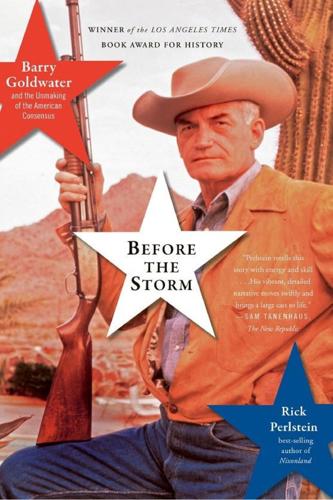
Before the Storm: Barry Goldwater and the Unmaking of the American Consensus
by
Rick Perlstein
Published 17 Mar 2009
—Sara Scribner and David Daley, The Hartford Courant “Although conservative Republicans suffered a humilating defeat in 1964, the principles they had embraced and the organization they had built endured, soon to bring them local, state and then national victories. Perlstein tells this story with energy and insight, and in lively prose.” —Gary Gerstle, Dissent “Finally, a gifted writer has told the full story of the difficult birth and exuberant adolescence of the conservative movement that went on to transform American politics. Rick Perlstein’s indispensable history is stuffed with wit, learning, and drama. After reading it, you will never think of the 1960s in the same way again.”
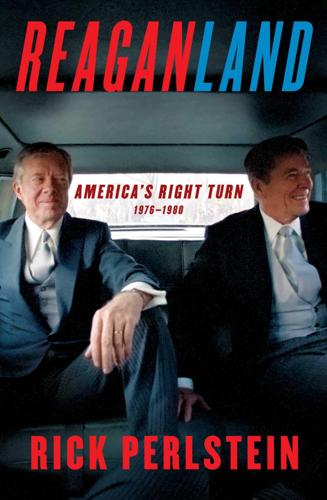
Reaganland: America's Right Turn 1976-1980
by
Rick Perlstein
Published 17 Aug 2020
“permanently federalizes and subsidizes” For the fight against the proposal are from George Schwartz, “The Successful Fight Against a Federal Consumer Protection Agency,” MSU Business Topics 27 (Summer 1979), 45–57. He was taking advantage Thomas Ferguson, “Industrial Conflict and the Coming of the New Deal: The Triumph of Multinational Liberalism in America,” in Gary Gerstle and Steve Fraser, eds., The Rise and Fall of the New Deal Order, 1930–1980 (Princeton: Princeton University Press, 1989); Rogers and Ferguson, Right Turn. “Will You Be Free to Celebrate Christmas” Poster in collection of author. Jack Brooks of Texas AP, April 19, 1977. Conservative think tanks Heritage Foundation Issues Bulletin, “Consumer Protection Act, H.R. 6805,” May 9, 1977.